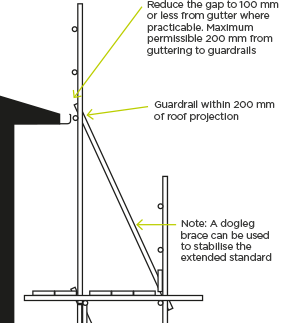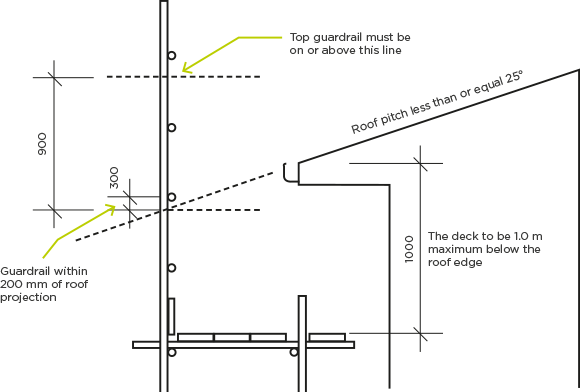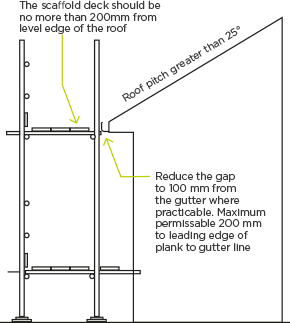Title Page
-
Site
-
Inspection Date and Time
-
Inspection conducted by
-
Document No.
-
Building Contractor
-
EH Project Manager
Site Control and Documentation
-
Take a photo of the site - Include as much as possible
-
A safety fence is erected, secure, without gaps, and gates are kept closed when required
-
The site box is installed and safely accessible
-
Relevant warning signage is installed, e.g. hazard board
-
EH reporting forms are available on site, e.g. report cards to report hazards, near misses, incidents etc., full incident report forms, toolbox talk forms etc.
-
How many workers are on site today?
-
All workers have signed into site and indicated they've completed the induction process
-
Is any notifiable work presently underway? e.g. work exposing workers to a fall risk of 5m or more, erecting or dismantling scaffold 5m or higher, working in a trench exceeding 1.5m deep.
-
Copies of notification of particular hazardous work to Worksafe NZ are available on site
-
Is any high risk work presently being undertaken? i.e. tasks that present a reasonable risk of serious injury or death, e.g. work at height, operating mobile plant, electrical work, using hazardous substances etc.
-
Workers have a documented safe work practice (in any form) for the high risk work, e.g. standard operating procedure, task analysis, safe work method statement, job safety analysis, risk assessment etc.
-
The documented safe work practice accurately reflects the nature of the task, e.g. it is site specific, or variations to a standard procedure have been documented, in any form
Facilities and Housekeeping
-
Toilet and hand sanitisation facilities are readily accessible (i.e. no further than the neighbouring site) and serviced adequately
-
Temporary power is available within a reasonable distance (i.e. no further than the neighbouring site)
-
A temporary running water supply, safe to drink, is readily available within a reasonable distance (i.e. no further than the neighbouring site)
-
Adequate waste management solutions are in place (e.g. skips)
-
The site is acceptably tidy (e.g. materials/equipment stacked in designated areas, trip hazards eliminated, waste cleaned up as much as practicable)
Emergency Planning and Prevention and First-Aid
-
A general emergency response procedure (e.g. evacuation, fire earthquake etc.) is available on site and contains accurate information, e.g. nearest medical centre
-
Are any workers undertaking work that requires a specific emergency / rescue procedure? e.g. using fall arrest equipment (e.g. safety nets), using large quantities of hazardous substances etc.
-
Workers have specific emergency / rescue procedures in place, relevant to the work
-
Provisions required to execute a specific emergency / rescue procedure are available on site, e.g. extra extinguishers, spill kit, access equipment etc.
-
Workers have been trained in, and practiced specific emergency / rescue procedures relevant to their work
-
A charged fire extinguisher is available on site
-
A complete first-aid kit is available on site
-
Adequate first-aid personnel are available given the nature of the risk associated with work underway
Risk Management Procedures and PPE
-
Is any work presently being undertaken by workers on site?
RISK MANAGEMENT PROCEDURES
-
Discussion with workers and/or review of documentation indicates workers have systematically identified their hazards and have assessed the level of risk (likelihood and consequences) posed by the hazards associated with their work (to the best of your knowledge)
-
Discussion with workers and/or review of documentation indicates they have selected and implemented the most effective control measures reasonably practicable, proportionate to each risk (to the best of your knowledge), e.g. they have considered the hierarchy of control
-
Discussion with workers and/or review of documentation indicates they have implemented systems to maintain, monitor, review and revise critical control measures e.g. inspections, daily checks etc.
PERSONAL PROTECTIVE EQUIPMENT
-
Workers have correctly determined the PPE required to minimise their risks (to the best of your knowledge), e.g. they can explain why they need to wear the specific PPE they have selected
-
Discussion with workers indicates they've been trained in the correct use and maintenance of relevant PPE
-
Workers have been provided with the correct PPE by their employer
-
Workers are wearing the required PPE
-
PPE is maintained and in appears to be in good condition (to the best of your knowledge)
-
Are dust masks or respirators required?
-
Workers are clean shaven to maintain a good seal between the mask and their face
-
The respirator has been fit-tested for the worker using it
-
Workers are clean shaven to maintain a good seal between the mask and their face
-
Discussion with workers indicates their employer monitors their health in relation to airborne contaminants, e.g. annual lung function testing
-
Is hearing protection required?
-
Discussion with workers indicates their employer monitors their health in relation to noise exposure, e.g. annual hearing testing
Critical Risks - Electricity
ELECTRICITY
-
Is a temporary builders power supply available for use on site or nearby? i.e. a generator is not required and the temp supply has not been decommissioned
-
The temporary builders supply box has an EH asset number inside the lid (indicating that EH is tracking inspections and holds compliance documentation)
-
The temporary builders supply appears to be in good condition, e.g. box lid closes, no signs of damage to electrical sockets or box
-
Are electrical items in use on site?
-
A suitable RCD is in use by contractors, correctly connected to the temporary builders supply, e.g. suitable for outdoor use and connected as close to the power supply as possible
-
Electrical items all have a current testing tag (3-monthly)
-
Electrical equipment appears to be in good condition, i.e. no visible sighs of damage
-
Leads are run safely, i.e. not in the path of vehicle movements or through water
-
Is a generator in use?
-
The generator has a current electrical test tag (3-monthly)
-
The generator appears to be in good condition, i.e. no damage, not fuel leaks etc.
-
The generator is located in an area with ample ventilation, i.e. outdoors and not near open windows
-
The generator appears to be safely earthed (to the best of your knowledge - check instructions)
-
The generator is of ample supply to meet the needs to the tools connected to it (to the best of your knowledge)
Critical Risks - Excavations and Trenches
EXCAVATIONS AND TRENCHES
-
Are there any excavations / trenches on site?
-
Excavations and/or trenches are isolated by secure fencing, or adequately covered when unattended
-
Excavations are adequately benched, battered or shielded adequately to prevent collapse or subsidence (to the best of your knowledge)
-
Discussion with workers indicates ground conditions have been assessed by a competent person (to the best of your knowledge)
-
Water accumulation is adequately managed (e.g. water is pumped out)
-
All materials and equipment is kept a safe distance from the edges of open excavations (minimum of 600mm)
Critical Risks - Tools, Machinery and Mobile Plant
TOOLS AND MACHINERY
-
Is any machinery or power tools in use on site? (excluding mobile plant)
-
Machinery and/or power tools appear to be fit-for-purpose and in good condition (to the best of your knowledge)
-
Guards appear to be correctly installed and operating safely (to the best of your knowledge)
-
All attachments, e.g. blades, discs, drill bits, appear to be correct for the tool and application, and in good condition (to the best of your knowledge)
-
Discussion with workers and/or review of training records indicate they are competent to operate the machinery or power tools in use (to the best of your knowledge)
-
Are any hand-held grinders on site?
-
Grinders are fitted with a power switch that requires constant pressure from the operator to run, i.e. cannot be locked ON
-
Are any hand-held circular saws on site?
-
Hand-held circular saws are fitted with a power switch that requires constant pressure from the operator to run, i.e. cannot be locked ON
MOBILE PLANT
-
Is any mobile plant operating on site? (e.g. excavators, bobcats, loaders)
-
Mobile plant appears to be fit-for-purpose and in good condition (to the best of your knowledge)
-
Evidence of required servicing, certificate or warrant of fitness etc. is available (to the best of your knowledge)
-
Discussion with the operator confirms regular inspection of the mobile plant - preferably with records kept
-
All operating manuals, specifications etc. for plant are available withe the plant
-
Exclusion zones are set up and enforced, e.g. operating areas are fenced or clearly demarcated with flags, cones, barriers, tape or similar, or a spotter is used
-
Do any items of mobile plant have quick-hitch coupler (ask the operator)
-
The operator can explain and show you both the primary and secondary locking systems, e.g. hydraulic systems or manual locking pin
-
Operating manuals, specifications etc. for the quick hitch coupler is available on site (if an aftermarket item)
-
The operator holds the required license, e.g. WTR endorsement, for operating the specific mobile plant (to the best of your knowledge)
-
Mobile plant with hydraulic systems have a spill kit available on site
Critical Risks - Hazardous Substances
HAZARDOUS SUBSTANCES
-
Are there any hazardous substances on site (that are not consumer products to be used in quantities, and ways, consistent with common household use)? e.g. paints, solvents, aerosols, fuels, lubricants, adhesives, foams, acids etc.
-
Relevant contractors have a hazardous substances inventory that meets the regulations (to the best of your knowledge), or inventory left on site if products unattended
-
Relevant contractors have current NZ safety data sheets readily available (digital or hard copy is fine) for their hazardous substances, or SDS left on site if products unattended
-
Discussion with workers indicates they have received adequate information, training, instruction and supervision for the hazardous substances they use, e.g. they know and understand the risks and controls, and training records are available
-
Hazardous substances (including decanted substances and hazardous waste) are clearly and correctly labelled (to the best of your knowledge), i.e. Labelled in English and includes the product or chemical name, a hazard pictogram and hazard statement consistent with the correct classification
-
Hazardous substances appear to be stored correctly (to the best of your knowledge), e.g. incompatibles segregated, correct containers, not in containers usually used for food/drink, secured from unauthorised access if required etc.
-
Any specific emergency provisions that may be required for the hazardous substances are available on site, e.g. fire extinguishers, spill kits etc.
Critical Risks - Working at Height
LADDERS
-
Are ladders on site?
-
Ladders appear to be fit-for-purpose and in good condition, e.g. trade rated for 120+kg, good non-slip feet, appear damage free, not covered in plaster/paint that could obscure damage, stays in place etc.
-
Are ladders in use during the inspection?
-
Ladders appear to be used for short duration tasks, i.e. minutes not hours for standard ladders, and a few hours, not days for platform ladders
-
Ladders are used correctly, i.e. not standing on top 2 steps, straight ladders tied off, well footed, 1:4 angle and extend 1m past step off point, step ladders have stays locked in place etc.
SCAFFOLD
-
Is there any scaffold on site?
-
Scaffold has a current signed inspection tag OR is clearly indicated as unsafe / not fit for use
-
Is any part of the scaffold over 5m from the ground?
-
Evidence is available that scaffold is being inspected weekly by a CERTIFIED scaffolder
-
Scaffold appears to be well footed, i.e. All standards have base plates on solid ground, base plates centered on sole boards on soft ground
-
All scaffold ladders appear safe, i.e. Founded on a level base (if external), adequately secured, 4:1 angle ratio and extend 1m above the working platform or are surrounded by guard-railing
-
Access points are protected by self-closing gates or hatches
-
All working platform lifts appear to be between 1.8 and 2.1m high
-
Working platforms are safe, i.e. secured, min. 675mm wide with 450mm min. clear space, gaps do not exceed 50mm and all planks are butted (not overlapping) except on returns
-
Guard-rails and mid-rails are installed at correct heights to the outsides and ends of all platforms, and to inside edges where there is a penetration posing a fall risk, e.g. full height window opening
-
Adequate kickboards are in place and secured, i.e. Kickboards to all platform outside edges and ends, and inside edges if access underneath, e.g. at garage door access
-
Scaffold appears to be level, rigid and stable (to the best of your knowledge), e.g. putlogs/transoms, ledgers, guard-rails and mid-rails are all horizontal and standards are vertical, bracing appears to be adequate and secure
-
Are rakers or outriggers used?
-
Rakers/outriggers are attached to standards or ledgers, OR to guardrails but no further tan 300mm from a standard
-
Rakers/outriggers are adequately braced back to the scaffold, e.g. creating an 'A' shape
-
Rakers/outriggers have sole boards in place OR are driven into the ground and have a horizontal tube connected perpendicular to the raker at ground level OR are connected to a vertical tube driven into the ground
-
All gaps from inside platform edge to the workface are 300mm or less OR have inside guard-rails, mid-rails and kickboards in place
-
Is scaffold used to provide roof edge protection?
-
Guardrails are correctly in place in all roof areas, i.e. if the roof pitch exceeds 25 degrees, the working platform, or lower rail (if guardrails form edge protection), is within 200mm of the gutter line OR if it is less than 25 degrees, the working platform is no more than 1m below the gutter/fascia AND 3 outside guardrails are installed above the intersection point of the roofline, with the bottom rail within 200mm of the intersection point and top rail at least 900 above the intersection point (see images below)
-
Roof pitch 25 degrees or less, with guardrail on the inside
-
Roof pitch 25 degrees or less, with guardrail on the outside
-
Roof pitch 26 degrees or more
-
Does the house have gables that presently need edge protection? i.e. for roofing.
-
Gable ends are protected with guard-rails and mid-rails at correct heights
SAFETY NETS
-
Are safety nets installed?
-
The handover certificate is available on site
-
Safety nets are installed to ALL areas required
-
There is no evidence that nets have been tampered with, e.g. left unhooked, hooked back up on the net rather than the border rope etc.
-
The handover certificate is available on site
-
A documented rescue plan is available on site (check in the site box)
-
Instructions for how to inspect safety nets and clear debris are available on site (check in the site box)
GENERAL FALL RISK MANAGEMENT
-
Other fall risks (not protected by safety nets or scaffold, e.g. unprotected areas, stairwell voids etc.) are adequately controlled
-
Are workers presently working at height using the scaffold and/or safety nets?
-
Discussion with workers indicates they have inspected the scaffold prior to use to ensure it is safe to use
-
Discussion with workers indicates they have inspected the safety nets prior to use to ensure they are safe to use
-
Discussion with workers indicates they understand the rescue plan for retrieving someone from the safety nets and have ensure required rescue equipment is available
Critical Risks - Environmental Hazards
ENVIRONMENTAL RISK MANANAGEMENT
-
Are there any potential environmental hazards on site? e.g. dusts, fumes/vapours, sediment, wash water, concrete waste water, run off etc.
-
Airborne contaminants are controlled as close as reasonably practicable to their source, e.g. extracted and filtered
-
Adequate dust control measures are in place, e.g. extracted, wet down, dusty stockpiles covered
-
Sediment is adequately managed, e.g. not tracked into the street, stabilised stone chip entry pads established, storm water entries protected if required etc.
-
Concrete waste water is collected (in a bunded area), removed from site, e.g. pumped into a container) and disposed of by an approved liquid waste handler
-
Washing of painting equipment is done using a commercial washing system and untreated wash water is not discharged on site or into the sewer or stormwater
-
Roof run off is adequately managed to prevent waterlogged or muddy work areas (e.g. redirected if permanent downpipes not yet installed)
Summary / Notes
-
Summary of observations and interactions / Any other general comments
-
Please upload any other relevant photos here
-
I have set actions for all risks identified that require attention from Enterprise Homes














